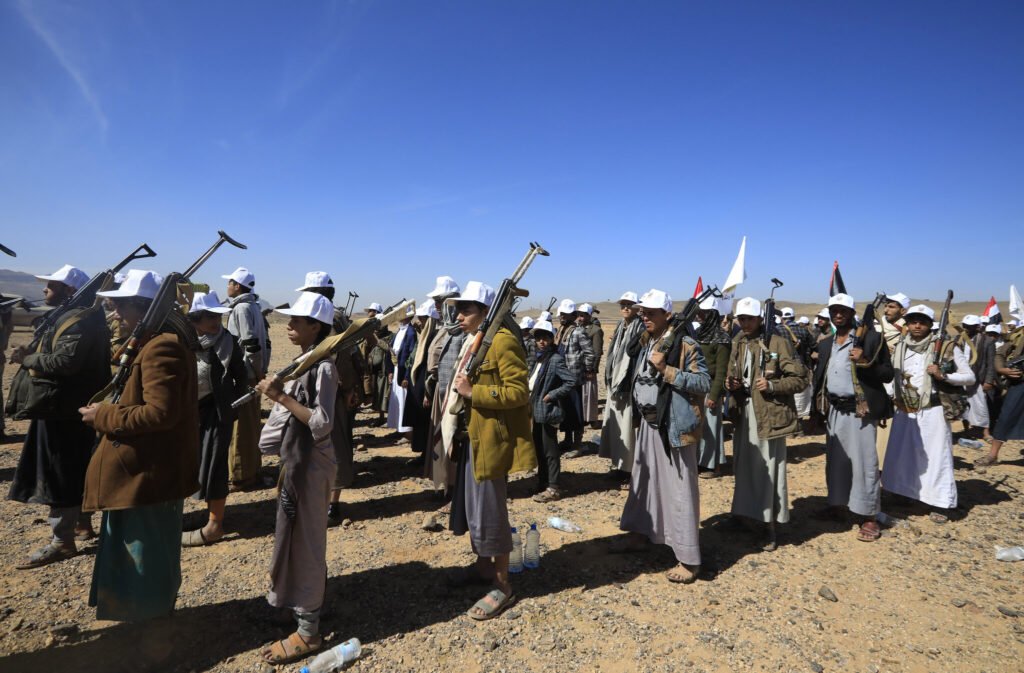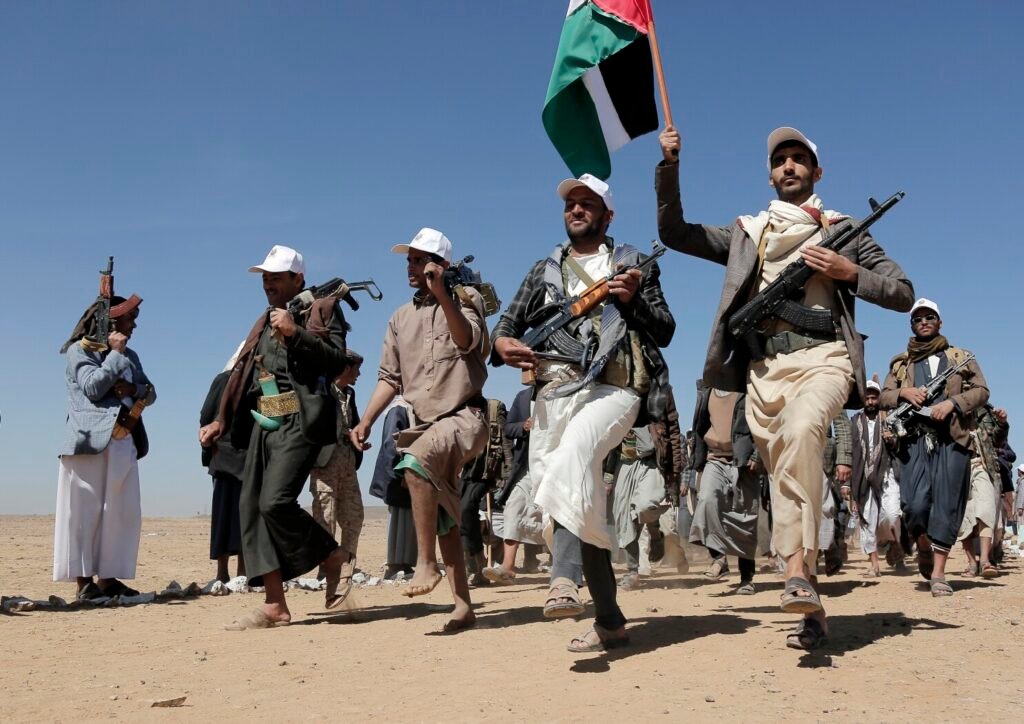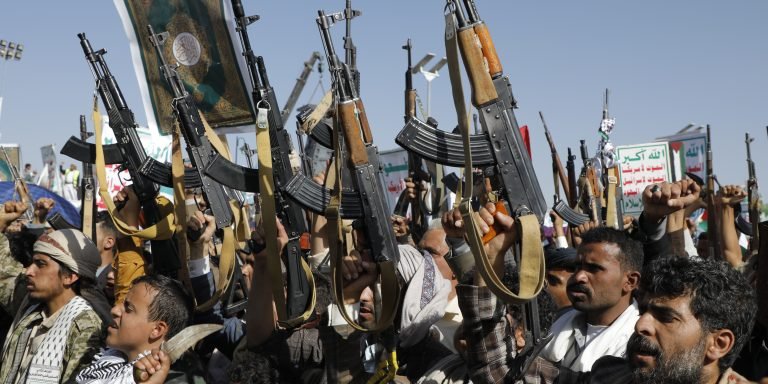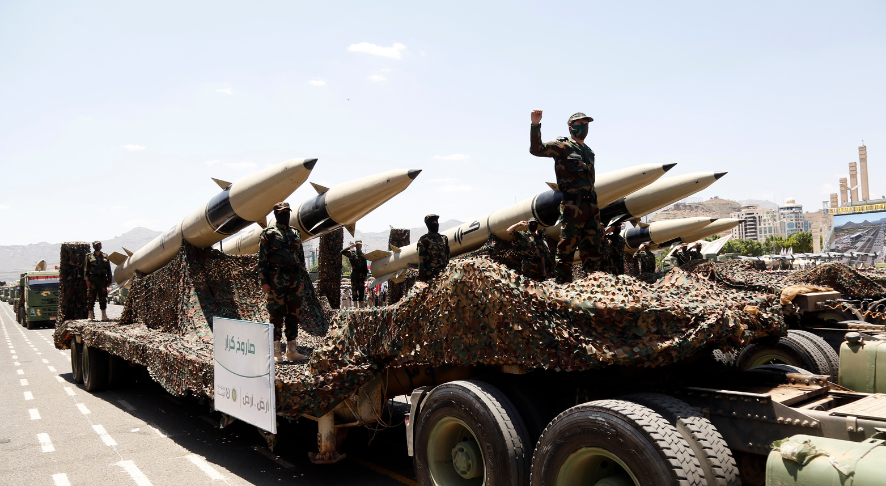Ten years ago, on September 21, 2014, the Huthis—formally known as Ansar Allah—seized control of Yemen’s capital, Sanaa. This takeover marked the beginning of a fundamental shift in Yemeni politics, as Ansar Allah transformed from a marginalized movement into a dominant force, now synonymous with Yemeni governance for millions. Children who grew up in Huthi-controlled Yemen have known no other authority, while many adults remember the increasing poverty and political unrest that characterized Yemen under Ali Abdullah Saleh’s three-decade regime.
From a small, sectarian youth movement called “Believing Youth,” founded over 30 years ago, the Huthis have expanded their influence through strategic alliances and military confrontations. Their ability to withstand and respond to international and regional pressures has granted them a significant role within the so-called “axis of resistance,” aligning Yemen with other regional powers opposed to Western and Israeli influence in the Middle East.

The Path to Power: From Margins to Mainstream
The Huthis’ rise began in the 1990s as a minority Shi’a Zaydi group in northern Yemen, facing competition from Sunni Salafi movements. Their marginalization in Yemeni society and political exclusion under Saleh’s government led to repeated conflicts, with six wars between 2004 and 2010 strengthening their military experience and expanding their territorial control. The Saleh regime’s divisive policies alienated large segments of society in contested areas, enabling the Huthis to consolidate power.
During the 2011 uprisings that eventually led to Saleh’s resignation, Ansar Allah broadened its base by standing apart from the transitional government formed under the Gulf Cooperation Council’s (GCC) agreement. The Huthis’ refusal to engage in the transitional administration, which became mired in inefficiency, helped improve their image and drew further support.

By 2014, they had taken over Sanaa in alliance with Saleh, leading to the collapse of the transitional government and the beginning of a full-scale war by early 2015.
Resisting Regional Influence: A New Dynamic in Yemen’s Conflict
In March 2015, Saudi Arabia intervened with a coalition, launching airstrikes intended to oust the Huthis and reinstate the internationally recognized government (IRG). The Huthis framed this intervention as an act of foreign aggression, rallying support with a message of national resistance against Saudi and U.S. influence. Despite the coalition’s military strength, the Huthis retained control over Sanaa and much of northern Yemen, where two-thirds of the population resides. Today, they govern key institutions and hold power over significant portions of the country’s territory.

The Huthis maintain that they represent Yemen’s sovereignty against foreign intervention, while the IRG, largely operating out of Saudi Arabia, remains unable to assert control. Although the Huthis have received technical and logistical support from Iran and Hezbollah, their campaign has been largely autonomous, framing their actions as a defense of Yemeni interests rather than regional agendas.
Expanding Influence: Ansar Allah’s Role in the Regional Crisis
The Huthis’ position has gained new international visibility, especially since the onset of the 2023 Gaza conflict. In solidarity with Palestinians, the Huthis have launched missiles and drones toward Israeli territory, though most failed to reach significant targets. Their operations have nonetheless disrupted Red Sea shipping, affecting Israel’s economy and gaining them recognition within the “axis of resistance.”

These attacks have drawn attention from around the world, as the Huthis emerge as a unique regional actor willing to challenge Israeli interests from a distance.
Through maritime strikes on Red Sea shipping associated with Israel, the Huthis have influenced the region’s trade dynamics, reducing Suez Canal traffic and raising global shipping costs. Despite increased naval security from the U.S., U.K., and other allies, Huthi operations persist, highlighting their strategic capability. Recent U.S. and EU-led naval operations have yet to stem the Huthis’ actions, with drones and missiles continuing to disrupt commercial routes.
The Resilience of Huthi Control and the Future of Yemen

As they mark a decade in power, the Huthis continue to rule with an uncompromising stance, limiting freedom of expression and imposing severe restrictions on women’s rights. Their governance style has drawn comparisons to regimes like the Taliban, where fundamentalist principles dominate administrative practices. Imprisonment and strict control over dissent remain central to their rule, and their influence over all levels of governance has cemented their authority in Yemen.
While Saudi-led negotiations in 2022 aimed at brokering peace between Ansar Allah and the IRG showed initial promise, the 2023 Gaza conflict shifted priorities, making a comprehensive peace agreement unlikely in the near future. The Huthis have emphasized their commitment to resisting Israeli influence, coordinating operations with regional allies in Iraq against Israeli ports. Their dedication to the Palestinian cause has solidified their position within the broader regional resistance, with military operations against Israel likely to continue as long as the Gaza conflict remains unresolved.

